We’ve been enjoying David Lasky’s poetry comics for some time now and have the good fortune to attend a couple of his past Friday Night Comics haiku workshops for the Sequential Artists Workshop. He’s teaching an eight-session haiku comics winter workshop that starts later this month and looks like it would be a lot of fun. Below, we had the chance to ask him a couple questions about his beginnings in comics and what he’s working on now.
How did you start making comics?
I’d always loved comics, and illustrated books, from a very early age. I really got into collecting Marvel comics as a teen. By the time I’d finished college, I knew that I wanted to devote my life to making comics. And I wanted my comics to be different from what anyone else had made before. This was the early 1990’s, and there was still so much that had never been done in the medium.
I didn’t go to any school to learn comics—there weren’t really very many schools that even offered it. I moved from the east coast to Seattle to be near creators I admired, like Roberta Gregory and Jim Wodring. And ended up falling in with a group of peers who were, like me, learning the craft of comics, while also wanting to tell interesting and challenging stories. The group included Megan Kelso, Jason Lutes, Ed Brubaker, James Sturm, Ellen Forney, Lin Lucas, Jennifer Daydreamer, Tom Hart, and Jon Lewis. In retrospect, interacting with them and learning from them was my ‘grad school’ for comics. Two of those creators, Tom and James, would end up founding their own college-level schools for comics.
I started out making mini-comics, which are home-made, photocopied comic books. From there I got little gigs doing comics and illustrations for a music magazine and a weekly newspaper. And within a few years had a small commercial publisher for my comic book. None of this made me wealthy—I was also working as an office temp while making my comics. But I was making my comics, and have basically been in that life ever since.
How did you develop your comics voice?
It’s hard to analyze oneself. I’m not even sure what my voice and unique style is, to be honest. I’ll try to describe my approach to making comics….
I try to let my writing come out as unfiltered as possible, in a way that, perhaps a fiction writer or an academic would feel was too unadorned or too raw. That’s not to say that I don’t polish and refine my words, but I strive to make them feel like what I would say if I was sitting at a table in conversation with the reader.
When creating the visual components of my comics, I try to create interesting images, to capture the reader’s attention. But a lot of my impulses to create “beautiful art” are sacrificed in the service of the story or the message that is being communicated. It’s a balancing act, I guess: creating images that appeal to the reader while communicating information. When the images and their message blend seamlessly and look gorgeous and tell an engaging story—that’s the ideal. But it’s hard to pull off all of those things at once.
What are some of the joys and challenges of making nonfiction comics?
I love the idea that comics can place a reader in another person’s shoes, in another person’s reality. I think it’s a valuable way to learn about the world, and to gain empathy for others. Drawing other people’s stories has increased my capacity for empathy.
But creating nonfiction comics can also be a huge challenge. When Frank Young and I co-authored “The Carter Family: Don’t Forget This Song,” we were telling the story of an actual family that lived in Appalachia in the 1930’s. We felt a huge responsibility to tell their story accurately, while also being very aware that our graphic novel was going to be, at best, a well-intentioned fabrication based on the oral histories we had to work with. We could approach the truth, but we would never get to it. We weren’t there, after all, in that time and place, so it could only be our own version of Maces Spring, VA in the 30’s that we could present.
I feel a lot more comfortable telling my own story in comics form. Lately I’ve been doing that in the very spare format of Haiku Comics. I’ll write a haiku from observation and then draw it as a short comic strip. If someone else is there with me, they might observe something slightly different, and that’s fine. They can create their own version of that moment; I’m creating mine.
Are you working on something now?
My comics (even the Eisner-winning “Carter Family”) have never paid well enough to become a full-time career option. For the last 15 years, I’ve cultivated a career as a teacher of comics and cartooning, while also making comics of my own and doing freelance work. Teaching Haiku Comics has become the most exciting part of this career for me. I have a new class coming up for winter, 2023 (starting January 22).
But as far as what I’m working on a comics creator, it’s kind of eclectic, and has been for years. I still want to try to create comics that no one else has made before. Haiku comics is a part of that quest, as well as abstract comics, and various other experiments. For the past decade, I’ve placed all these little poetry comics and experiments in a self-published series called “Manifesto Items,” which I sell via my Etsy shop.
I started a graphic novel in 2017, but it’s been ‘on hold’ for a while. I’m still trying to decide if I’ll continue with it, and if so, what that would look like. Making a graphic novel is apparently easy for some people, but so far, it’s been very difficult for me. Like running a marathon. I’m much more comfortable creating short pieces; I guess I’m a sprinter. I find it very satisfying to take on a new idea, wrap it up, and move on to the next thing.
Seattle artist David Lasky co-authored the graphic novel Carter Family: Don’t Forget This Song, which won comics’ Eisner Award in 2013. He is the colorist of the Newbery Honor Book El Deafo. When not drawing comics, he likes to write poetry in his spare time, and sometimes combines art forms to make “poetry comics.” David has been a graphic novel instructor for 15 years, teaching to all ages and skill levels.
Check out David’s Patreon to see new work regularly.
You can also follow him on Instagram.

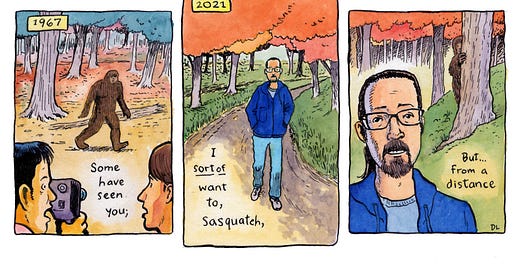




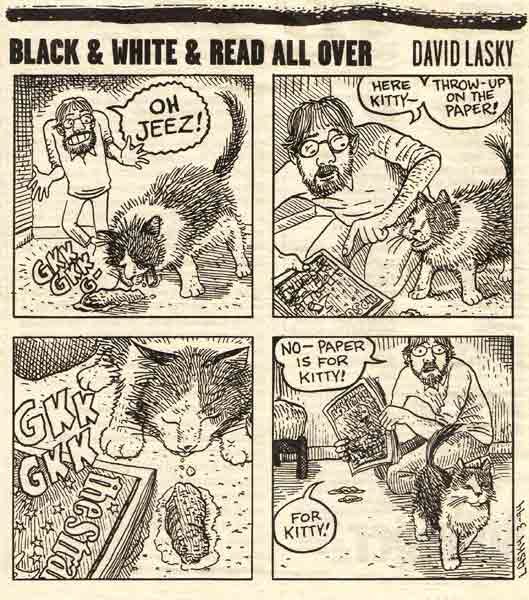
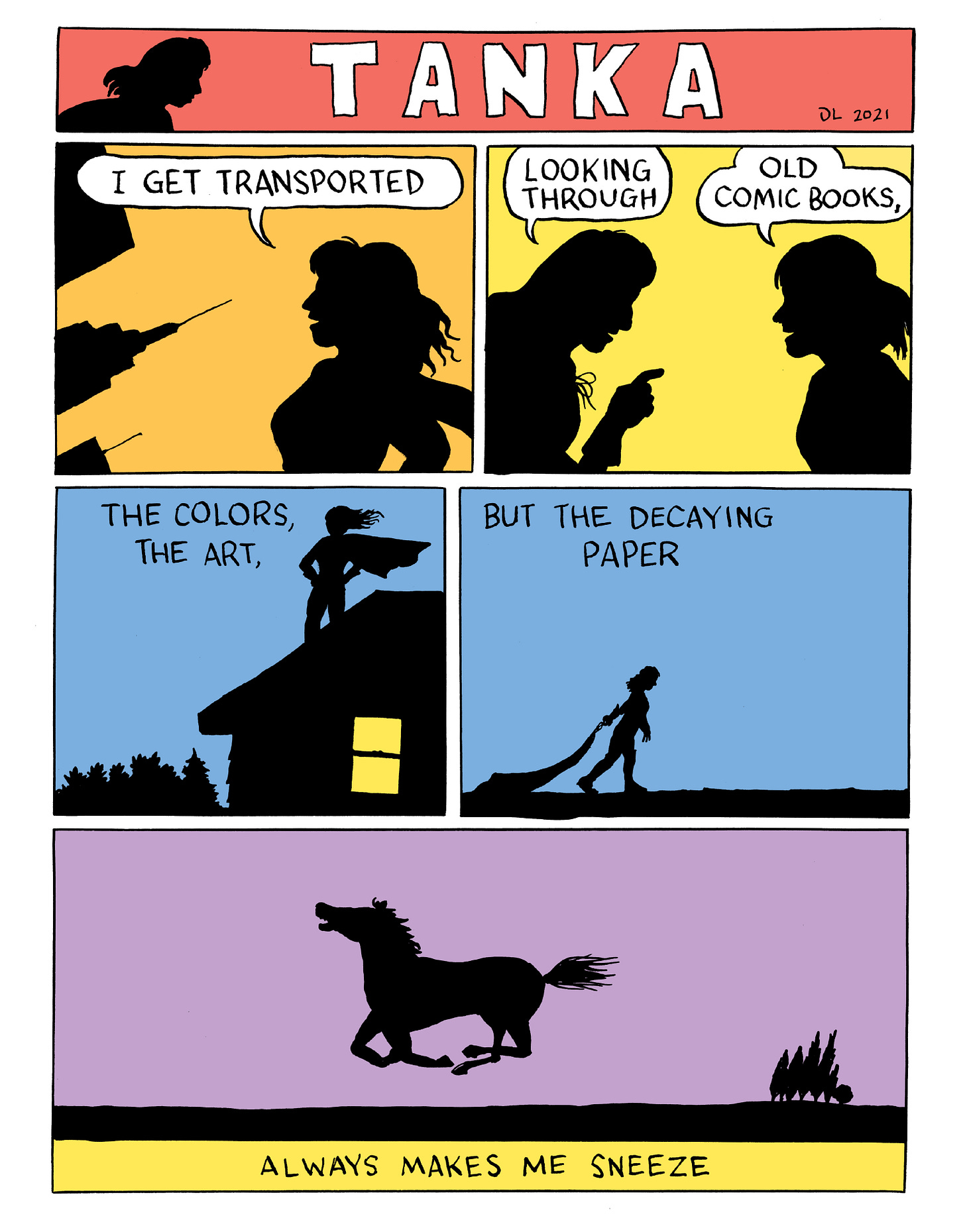
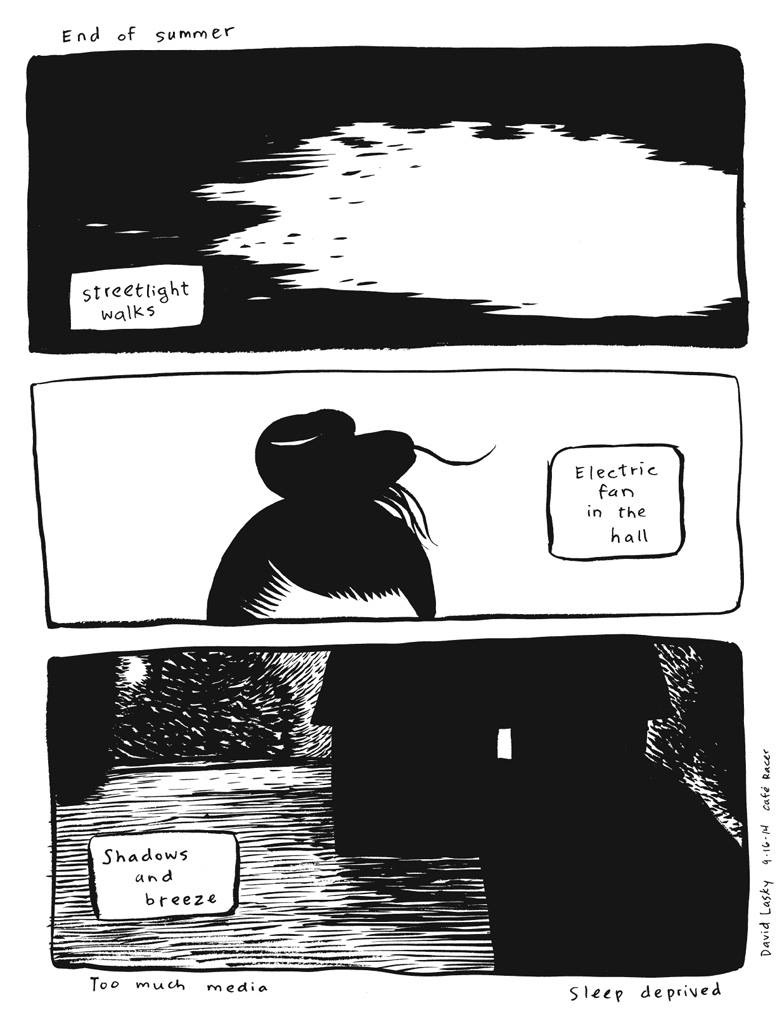
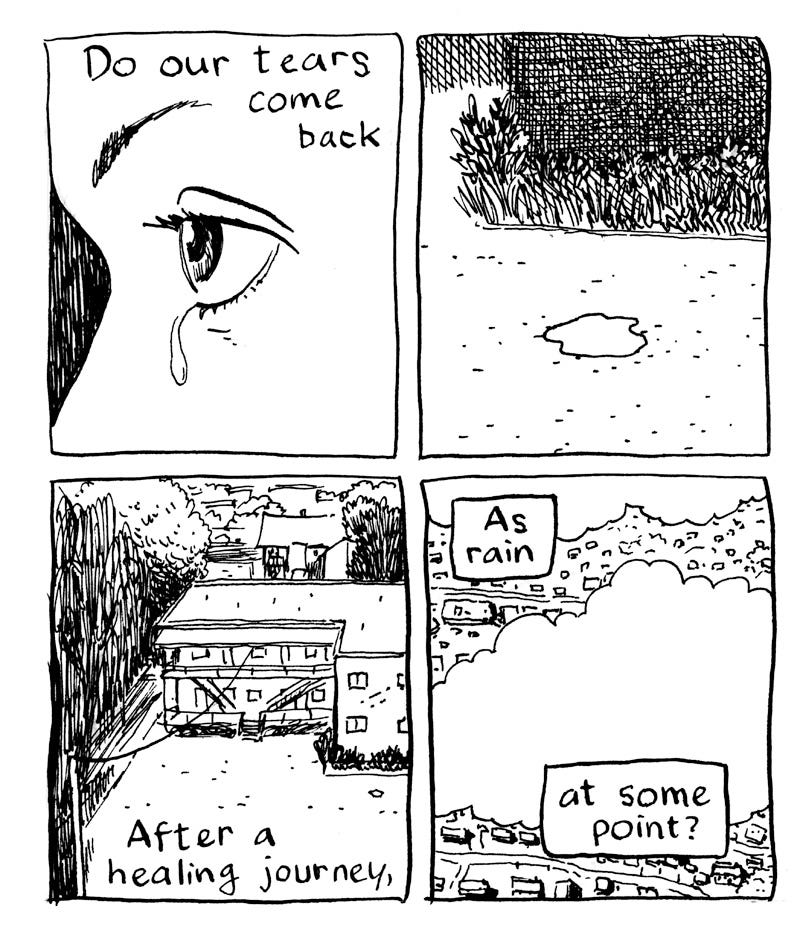

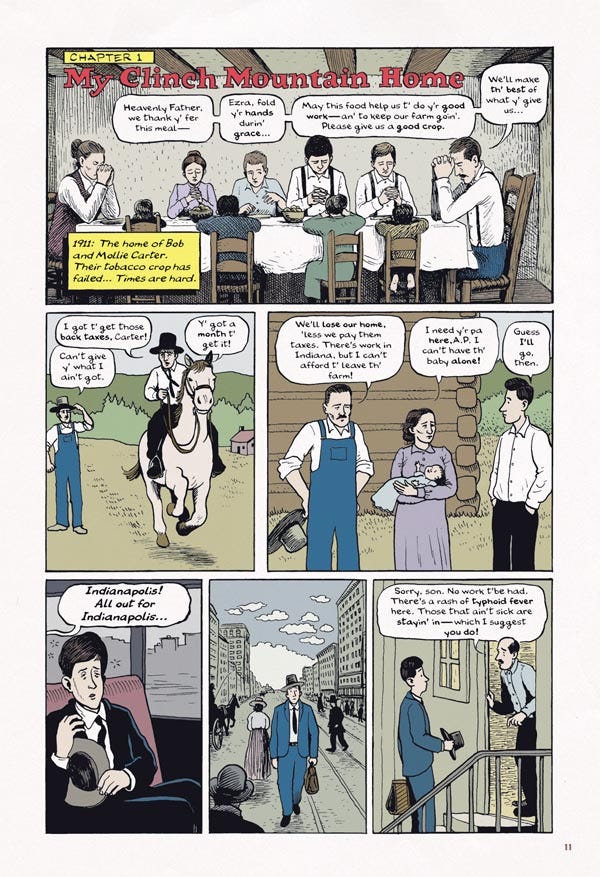

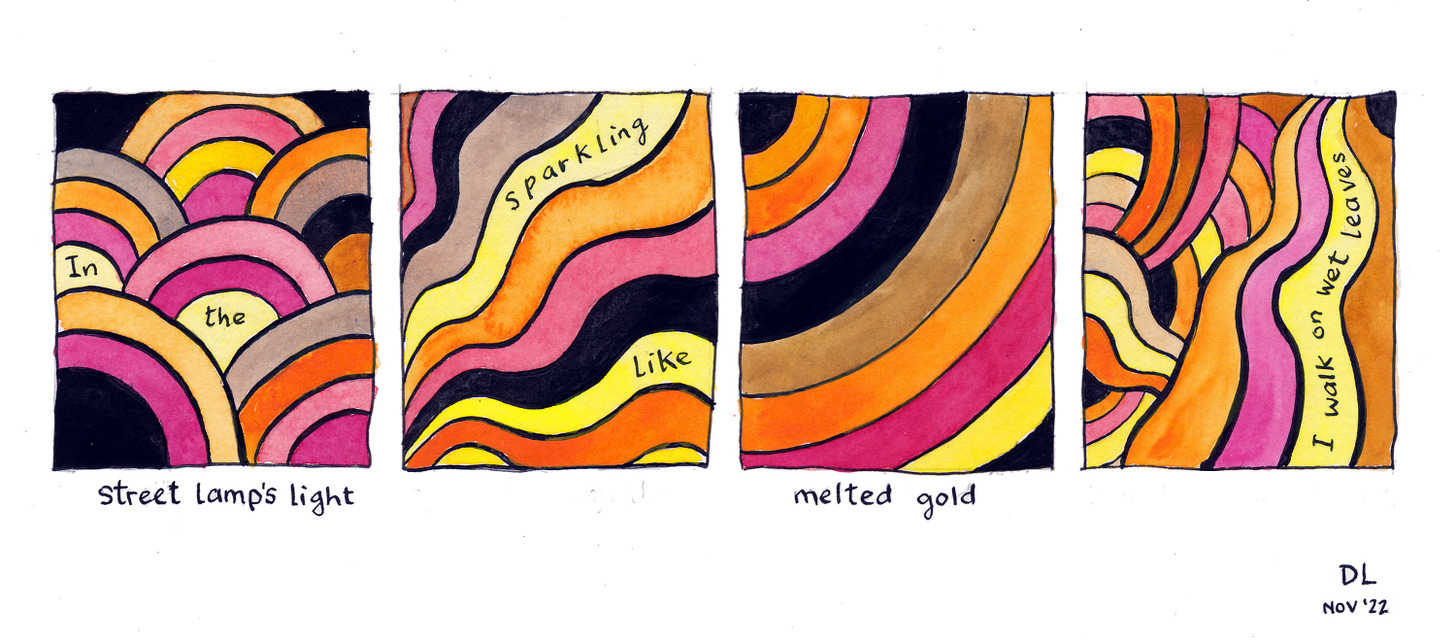
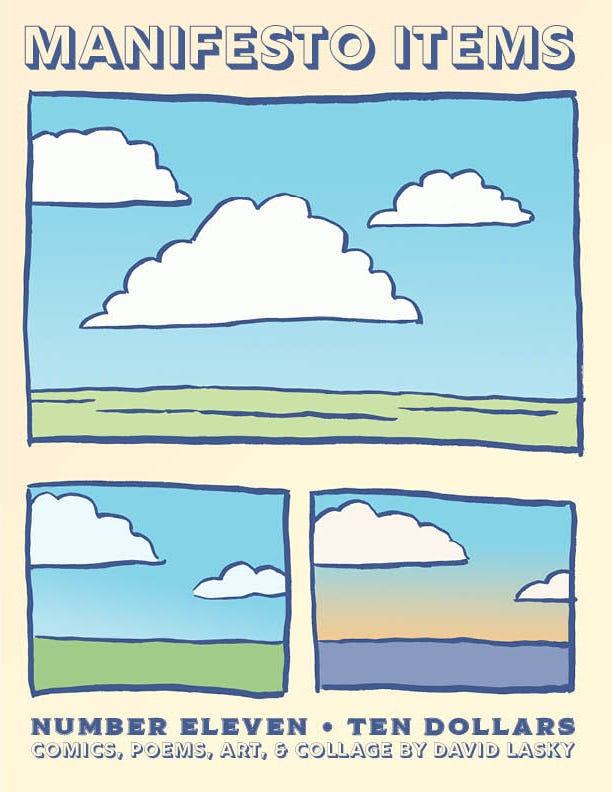
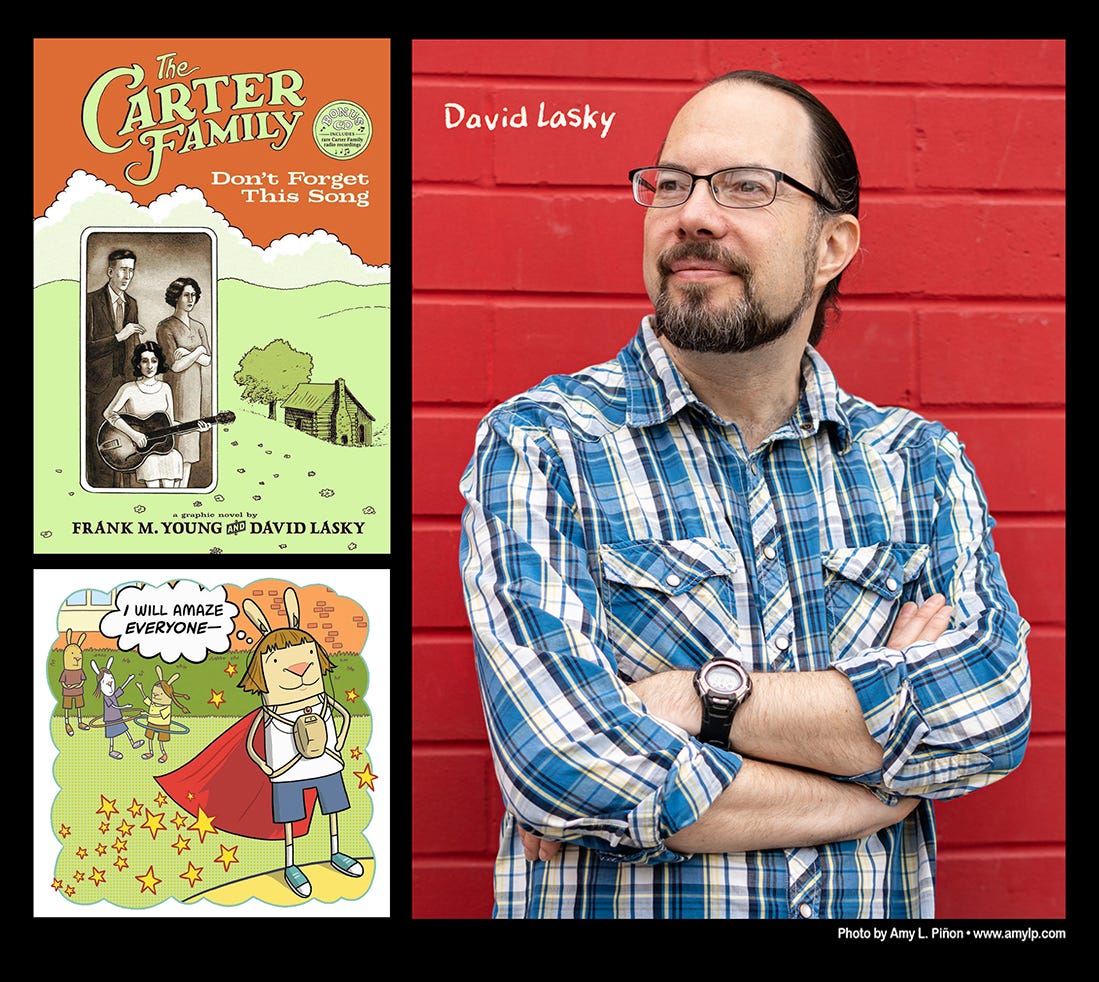
David's Haiku Comics classes are fantastic!
Another great interview! Glad to learn more about David's work!